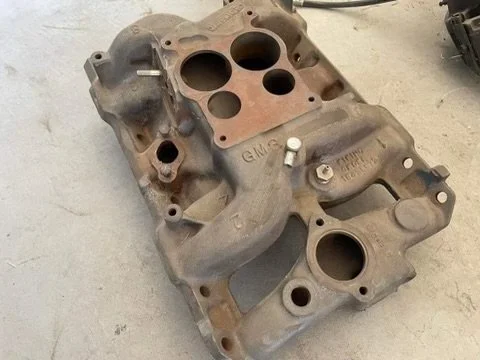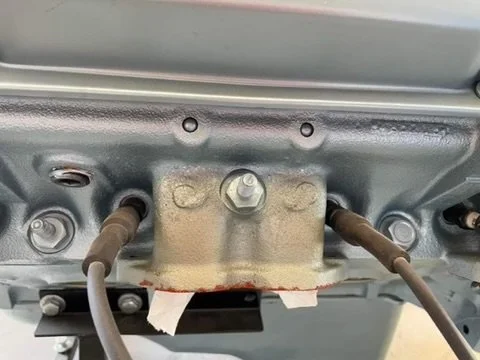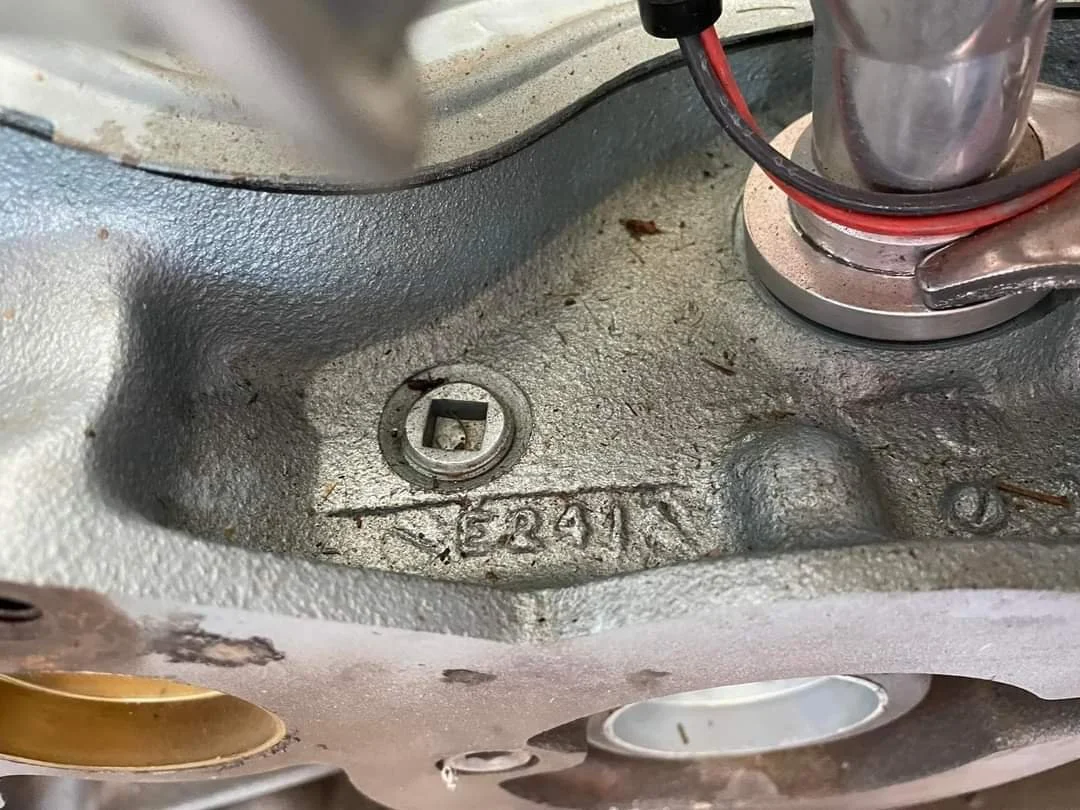General Motors dropped the Pontiac brand more than a decade ago, but hobbyist interest remains very high—particularly within subsegments such as the GTO, Firebird, and anything Super Duty (421 or 455!). Every so often we still we happen across new revelations that occurred 50-plus years ago that excites the Pontiac hobby today. I’m privileged to share one with you!
The new-for-1973 Grand Am combined Grand Prix luxury and Trans Am performance. The “SD-455” decals beneath the market lights tells the tale of this particular example! (Photo courtesy of General Motors)
My dad is an avid collector of vintage magazines containing articles of then-new Pontiacs—a trait he’s passed on to me. About 20 years ago we came across one neither of us had seen before. In the November 1972 issue of Road Test magazine was a review of the new-for-1973 Grand Am and it was equipped with the also-new-for-1973 Super Duty 455! It’s the only such review we’ve seen since.
The November 1972 issue of Road Test magazine contained a detailed evaluation of Pontiac’s only production Super Duty Grand Am. Scroll down to find the entire article.
The Grand Am was finished in Cameo White with vinyl accent stripes. It was equipped with the (preproduction) 310 hp SD-455, a Turbo-400 automatic transmission, and a NACA-hood-specific Ram Air system. The writers praised its performance and handling. With a 3.42 rear axle ratio, the Super Duty Grand Am ran the quarter mile in 14.8 seconds at 96 mph—quite impressive from the nearly 4,200-pound A-car!
There’s little doubt that this Pontiac press photo was the same car in the Road Test magazine article! (Photo courtesy of General Motors)
We know from my previous blog that the 310 hp SD-455 was to be equipped with the 308/320 camshaft, but no production SD-455s ever legally received the “K” grind. I could only assume that the particular Super Duty Grand Am made available to Road Test magazine was an engineering mule much like the Super Duty Firebirds and GTOs that writers tested at the 1973 Press Preview in June 1972. You know, like the 1973 Super Duty GTO that High Performance Cars magazine awarded its Car of The Year trophy.
The 1973 Pontiac Options and Accessories reports reveals that Pontiac installed one LS2 Super Duty 455 into a LeMans-line vehicle. The D37, F37, and H37 are the models the SD-455 was available in. In this instance, they are two-door LeMans, LeMans Sport, and Grand Am, respectively.
Something gnawed at me though. In my literature collection is a 1973 Pontiac Options & Accessories report dated August 16, 1973, which details optional equipment production totals by model. It reveals that Pontiac officially produced a lone 1973 A-car equipped with the LS2 Super Duty 455. For the past several years I’ve often wondered if the Grand Am in Road Test magazine could have been that car? I had nothing to substantiate it, however.
A rare color image of the Super Duty Grand Am. (Photo courtesy of General Motors)
We also learned from the previous blog that former GM engineer Rick Annis salvaged a developmental SD-455 from GM’s Desert Proving Ground (or DPG) in Arizona. Fellow hobbyist Michael Scicluna was speaking with Rick about purchasing the unique SD-455 for his project, and Michael—keenly aware of my Super Duty interest—connected me with Rick so I could learn more about this special engine.
Most Grand Am enthusiasts are familiar with these images or the Super Duty powered press-car. (Photo courtesy of General Motors)
“I always liked Pontiacs, but as a validation engineer for Hydramatic, I was able to work with the best from every division,” Rick explained. “Several GM divisions shared the same warehouse at DPG and when digging for my parts, I saw the performance area where components for high-speed testing were stored. There sat an SD-455 on a pallet. I asked technician Louie Clements for more information about the engine and he told me that he used it to test the coolant system inserts he designed to prevent exhaust valve failure during high-speed testing.”
The “INSERT” stamped into the accessory boss in this image that Rick sent me indicate the coolant inserts that technician Louie Clements installed during his testing.
In his warehouse visits, Rick kept a close eye on the SD-455. “It wasn’t uncommon to see prototype parts around DPG,” he said. “The engine sat on a pallet for years without moving. Everyone knew it was an SD-455, but I knew it wasn’t typical. There were no casting numbers on the intake manifold or cylinder heads. Others probably thought it was a production engine, but I knew it was developmental, so I always kept my eye on it wondering what would happen to it. “
Notice the lack of a casting number on the SD-455 intake manifold in this photo Rick sent me? It’s one characteristic that indicated to him that this particular SD-455 had a developmental lineage.
With any large corporation, it’s common practice to remove obsolete stock to open space for new. Rick said from time-to-time DPG was instructed to purge leftover parts and one day in the mid-1980s he saw the developmental SD-455 heading to the scrapper. Knowing how special this particular engine was, Rick approached his manager, who was also a car guy and appreciated Rick’s interest in saving the SD-455. He told Rick that he could have it!
The lack of the “16” on the center exhaust ports and the AIR rail visible in this photo that Rick shared with me are characteristic common to developmental SD-455 cylinder heads.
The developmental SD-455 then sat in Rick’s garage for the next 30 years while he decided the best course of action with it. A few years back he had it rebuilt, which was much needed as its coolant wasn’t drained the last time it was ran at DPG and that coolant migrated into the cylinders necessitating the installation of a couple of cylinder sleeves. He bought a ’67 Grand Prix to install the fresh SD-455 into, but ultimately decided it wasn’t the right Pontiac for an engine of such significance. It needed to be united with the right car, and that’s when he and Michael connected.
An Engine Serial Number of 3P-455SD-15 is consistent with other Pontiac Engineering built SD-455s I’ve seen over the years. The stamped “490351” is Pontiac’s part number for the assembled SD-455 including all bearings and core plugs.
During our discussions Rick sent me a number of photos via text message. I immediately recognized several characteristics indicating that this particular SD-455 was indeed a developmental example. When Rick shared closeup shots of various cast dates and stampings, the presence of a VIN stamp on the front of the block had me very intrigued! I immediately recognized that it indicated a very-early-production Pontiac produced at the home plant and began wondering what we’ve unearthed.
Rick sent me this photo depicting the VIN stamp on the developmental SD-455 block. While a gang stamp was used to stamp the vehicles specific VIN onto the block at the vehicle assembly plant, this one-off SD-455 was hand-stamped to create a “production” engine.
I contacted Jim Mattison at PHS Automotive Services and inquired if he’d ever located the VIN of the lone Super Duty A-car indicated in 1973 production records, which at that point he replied he hadn’t. A little while later I contacted Michael to ask if he was aware of the VIN stamping on the block. Wondering about the VIN, too, Michael had just submitted it to PHS Automotive Services for its documentation service and received the factory-to-dealer invoice for the Pontiac in question, which he then shared with me. I was astonished! It was a 1973 Super Duty Grand Am!
PHS Automotive Services provided the factory-to-dealer invoice associated with that VIN, I was astonished when it came back to a 1973 Grand Am in Cameo White with the LS2 4BBL 455 SD engine option! The car was built by mid-September and billed to Pontiac’s Show Car Pool.
The invoice reveals that the Grand Am was produced at the Pontiac plant in September 1972 and assigned to Pontiac’s Show Car Pool. After reviewing its optional equipment and locating additional photos from the November 1972 Road Test magazine article, I can confirm that Rick’s developmental SD-455 was from that very Grand Am. Why a developmental SD-455 in that car, you ask? The SD-455 hadn’t been released for production yet and, as we learned in the previous blog, the first production run of Super Duty castings didn’t occur until November 1972. To fill the September 1972 vehicle order Pontiac Engineering took various developmental components and hand-assembled a “production” SD-455 for the application.
Rick shared the cast date on this particular SD-455 block. E241 decodes to May 24, 1971. That’s nearly 18 months ahead of the first production run of regular-production SD-455 castings.
We can only speculate that once Pontiac learned its early SD-455 with the 308/320 camshaft wasn’t emissions legal, and then had the SD-455 pulled from the Grand Am option list, the one-off Grand Am wasn’t relevant or saleable and was relegated to engineering use. It's likely that once the Grand Am’s body was destroyed in testing, its SD-455 was plucked and pressed into service for other duties ultimately landing at DPG. I suppose it’s remotely possible that the Grand Am’s body is out there somewhere, but I’d venture to say it’s highly unlikely. The again, it took half a century for its engine to surface!
The Pontiac press photo contains images that appear to be taken from the same day that Road Test magazine evaluated the Super Duty Grand Am for its article. (Photo courtesy of General Motors)
No matter the case, we, as Pontiac hobbyists, have learned of another Super Duty 455 spectacle—a race-bred engine that continues to captivate and excite hobbyists as much today as it did in the early 1970s. We must credit Rick Annis for recognizing the developmental SD-455, considering its significance, and keeping watchful eye over it. If he hadn’t asked to salvage it, the unique piece of Pontiac history would have been recycled and the mystery of Pontiac’s lone Super Duty-powered 1973 A-car would have probably remained unsolved!
















